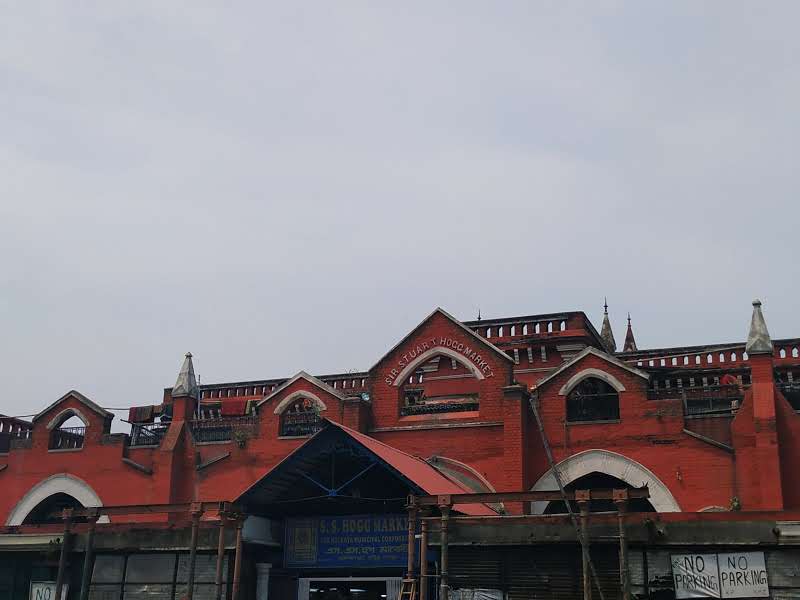Kolkata may be the City of Joy, but it evokes several emotions. The colonial charm of Park Street, Foreshore Road’s magnificent skyline, the sporting spirit at Mohun Bagan, the hustle and bustle at Nutan Bazaar and the smell of delicious Chinese food at Tiretta Bazaar—this centuries-old city, which was once the cultural, commercial and educational hub of eastern India, has something for everyone.
Kolkata—then known as Calcutta—was once the capital of India under British rule. The East India Company first established its presence in Calcutta, eventually becoming a major political power in the region. As trade flourished in the 19th century, Calcutta witnessed rapid urbanisation. The town was divided into two parts—the White Town (for Europeans) sprawled across Chowringhee and Dalhousie Square whereas the Black Town primarily constituted northern Calcutta.
Although Kolkata is now a melting point of cultures, these historical influences can still be observed in both parts of the city. This old-world charm coupled with modernity is perhaps what makes Kolkata so special. Not many places have managed to balance the old and the new as well as the City of Joy.
It is this unique characteristic that we are set to explore in our latest heritage walk as we traverse through Kolkata’s New Market, officially known as the S.S Hogg Market. Organised by Sahapedia, through its outreach programme India Heritage Walks, on July 20, 2019, the walk takes one through the market while exploring the history and culture of its colonial institutions.

The S.S Hogg Market has a racist and classist history. In the 19th century, when the British had a hold over the city, the only bazaars that existed were Dalhousie Square, Lalbazaar and Tiretta. Though these areas were largely occupied by Europeans, native settlements started to grow on their fringes. This was deemed unacceptable as the British were quite averse to ‘brushing shoulders’ with the locals.
Thus, a large Victorian market complex was built in 1874 on Lindsay Street, exclusively for Europeans. Given the support showed by Sir Stuart Hogg, the chairman of the Calcutta Corporation, the market was named after him. The shopping arcade was visited by several affluent colonials from across India who came to shop at high-street brands such as Ranken and Co. (dressmakers), Cuthbertson and Harper (shoe merchants) and Thacker, Spink and Co., the famous stationers. The market continued to expand throughout the 20th century and even survived two major fires.
Despite the fancy shopping malls that have popped up in every corner of the city, New Market has continued to hold its ground. With over 2000 stores, the market is known to sell everything under the sun, from garments and hardware to food and books. Whether during the festive season or on a normal day, you can always spot a huge crowd of enthusiastic people shopping here.
New Market also happens to be the city’s first municipal market. Its buildings have beautiful grand façades and were built in the Gothic style, reminiscent of its Victorian past. The market is known for its red walls, white arched windows and majestic clock tower (the clock for which was exported from Huddersfield in 1930). This walk will examine the architecture and heritage of these structures, while also discussing how it survived the fires.

We will traverse through the complex and learn how a market meant exclusively for Europeans is now a hotspot of diverse cultures. From shops selling coffee beans from Kerala and tiny stores offering Darjeeling tea to a 100-year-old Jewish bakery and a handicrafts shop from western Uttar Pradesh, New Market embodies Kolkata’s cultural diversity. Walk, talk, shop, observe and be completely in awe of the rich cultural legacy of New Market. This exciting heritage walk will be led by Sahil Ray, a heritage enthusiast and history major from Jadavpur University. A vivacious storyteller, his areas of interest include food and culinary history. He is also well-versed in the sociocultural history of colonial Calcutta.
Join us and explore the material, historic and cultural richness of Kolkata’s New Market.
This guided tour is free. To know more click here.
To understand more about the rich cultural heritage of Kolkata on Sahapedia, click here.
References
https://en.wikipedia.org/wiki/Kolkata#cite_note-39
https://www.indiaheritagewalks.org/traversing-through-kolkatas-new-market
https://en.wikipedia.org/wiki/New_Market,_Kolkata#cite_note-Nag-1
https://scroll.in/roving/806927/photos-in-kolkatas-historic-new-market-tradition-life-and-decay-c
https://www.sahapedia.org/search/contents?keyword=kolkatao-exist-under-one-roof

